Top forms for nail extension: types, selection and use
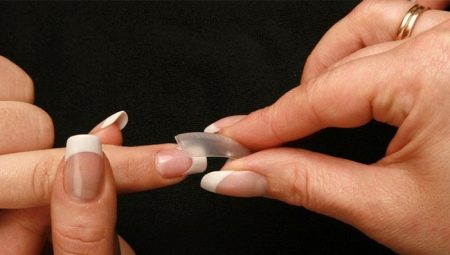
Nail design begins by shaping them into the desired shape. At the same time, today, more than ever, modeling is relevant, for which the masters use different techniques. One of them is the extension of the length through the upper forms. What it is, how to use such materials correctly, how to choose them, the material in this article will tell.
Modeling features
The upper forms are special templates, through which you can significantly reduce the time for modeling the nail plates. As a rule, it is no more than one and a half hours. The technique is unique in that it allows you to work on your own nails. The templates that are used for it can be used with thinned and weakened nail plates.
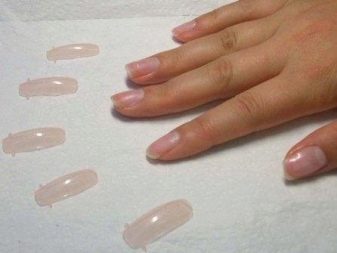

Using the upper forms, you can build up acrylic or gel nails. In fact, the templates themselves are nothing more than stencils that are applied to the nail plates with a working material to create the desired length outside the regrown edge.
One of the features of such modeling is the fact that it is not demanding to care for. Correction of such nails is needed about once a month, subject to moderate regrowth.
Depending on whether they use gel or acrylic, the extension technology will differ. The difference is that acrylic does not need polymerization in a lamp, but for gel you will have to use a special drying lamp. As for the first option, it is easier to remove such marigolds in the future, using a special monomer to dissolve acrylic.
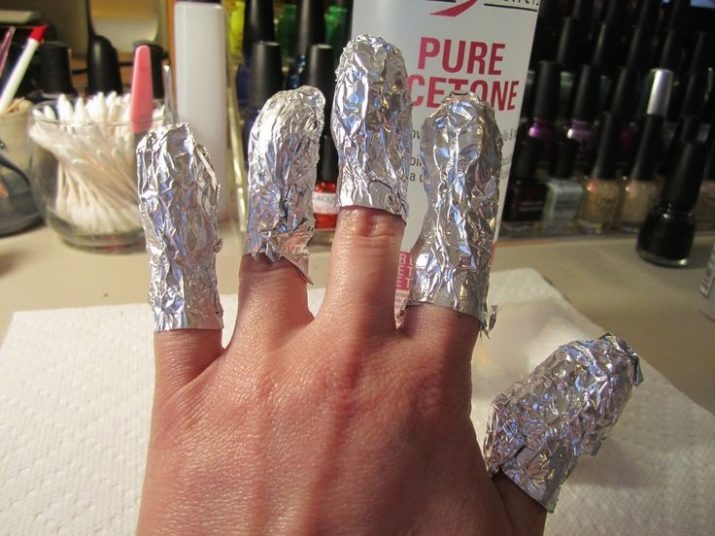
The modeling gel cannot be softened after drying in the lamp; they will have to be filed off.At the same time, an interesting nuance is the similar chemical composition of the two building materials.
Working with the upper forms eliminates the need for filing the artificial nail, which saves the amount of consumable material. As a rule, when working with such templates, an excellent "stress zone" is created, the finished plate is almost perfect. You can master this technique very quickly, sometimes a couple of days are enough for this. At the same time, it is important that you can use the upper forms with very short and bitten nail plates. In addition, the new nails are naturally thick and look natural.
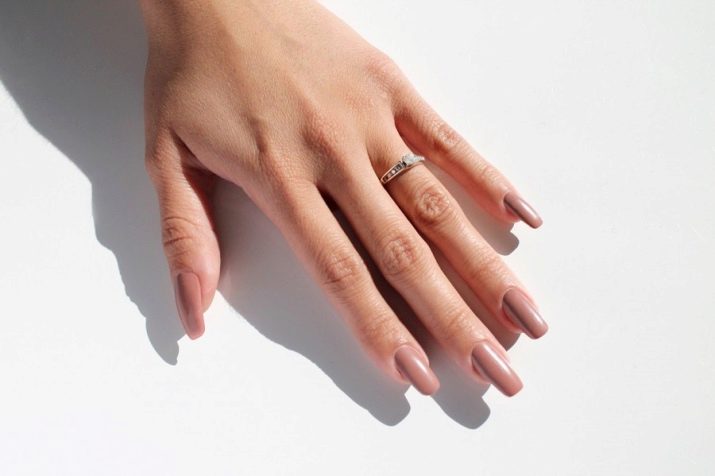
Varieties
Today, two types of top molds are known. Depending on the cost, they can be either with or without markings that facilitate the workflow. The first option is especially convenient for beginners getting acquainted with nail extension using such templates. The markup on the forms may differ, somewhere it is arched stripes, somewhere it is a grid.
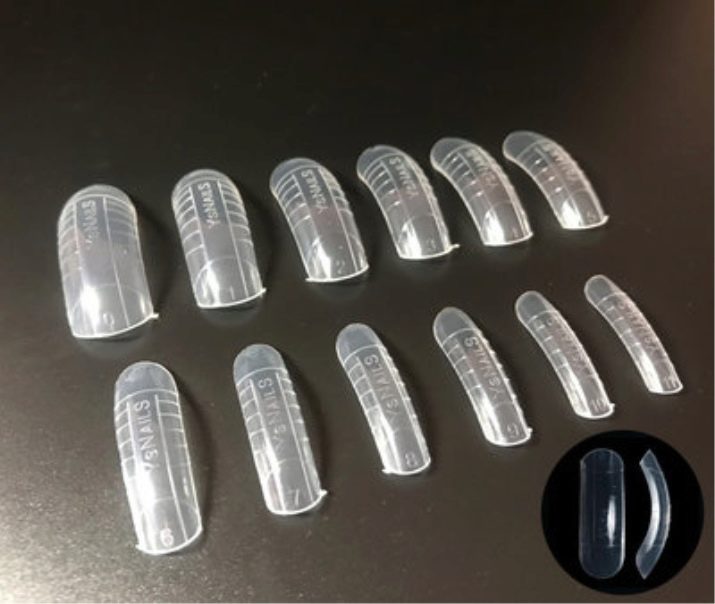
The set has the same arch and length and is marked with the indicated dimensions. Based on the marking lines, it is easier to align the length and correct the edge. There is no need to tediously adjust the identical shape here, since it is already there. The upper forms are referred to as reusable types of extension templates. They differ from arched counterparts and liquid tips.
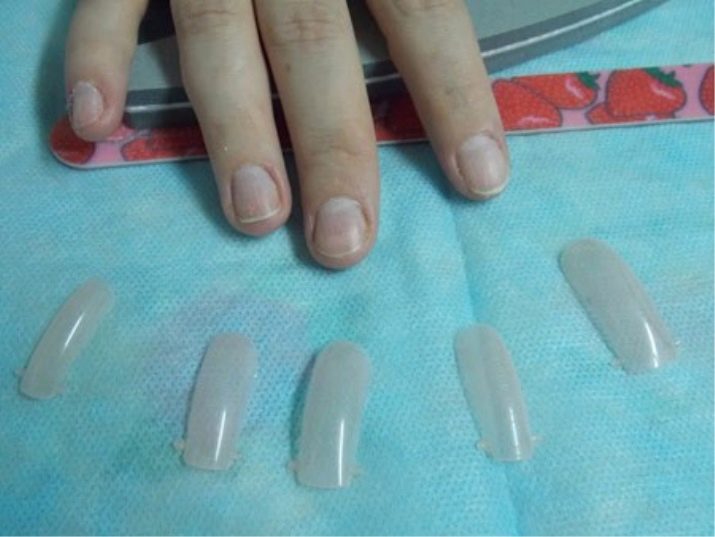
How to choose?
When buying upper forms for nail extension, you should pay attention to a number of nuances. For example, the internals of the templates are very important. It should not have visible defects, a high-quality product will leave the desired gloss on the new nails. Usually, such frames are enough for 40-50 extensions. It is better to buy a frame with markings, especially for novice craftsmen.
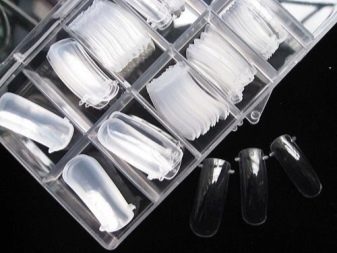
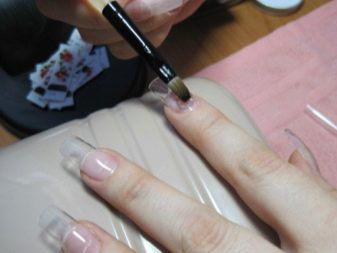
When choosing the required option, it is worth looking closely at the shape of the templates, which may differ. Sometimes it is more curved, sometimes the difference may be in the height of the arch. It is better to take the option in which the manicure hatchet can fit in the space between the form itself and the nail plate.
It is recommended to purchase sets with a large number of elements - this will allow you to select the required dimensions as accurately as possible.
Depending on the type of modeling agent, extensions to silicone tops may require gel products, as well as base, top and acrylic. In addition to them, you need to prepare the templates themselves, the primer for the adhesion (primer), the cuticle remover oil, the glossy finish, the dispersion layer remover, brushes, files, an orange stick and a dehydrator.
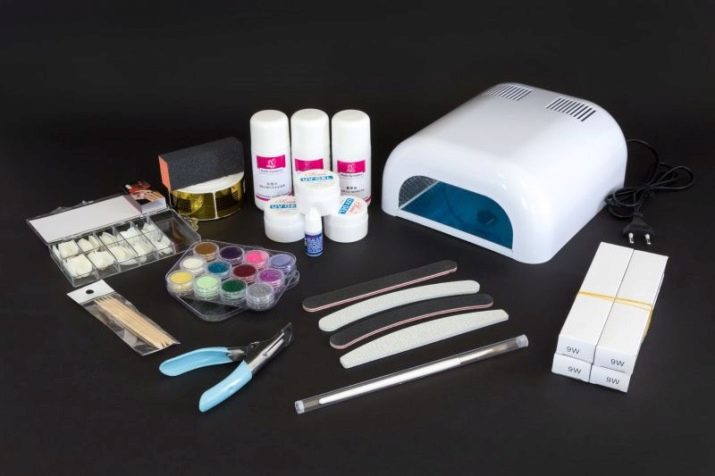
Step-by-step build-up
The technique for working with the upper forms will depend on the type of simulator used. However, to begin with, in both cases, prepare the nails.
Gel
Polygel is a special fast-drying substance with a thick, creamy texture. Such a construction composition dries up in just half a minute. The extension technique in this case will consist of a number of sequential steps:
- hands are treated with an antiseptic;
- push back the cuticle, process the free edge with a file;
- the gloss is removed from the plate, achieving a slight roughness;
- select the size of the workpiece, which should be slightly larger than the extended nail;
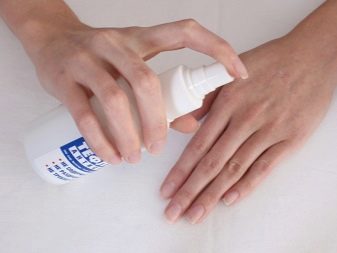
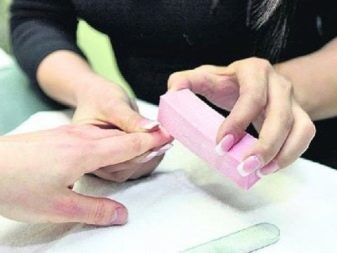
- put a little gel inside, distribute it, forming a free edge;
- the form is applied to the nail, aligning its base with the base of the natural plate;
- excess modeling agent is pushed aside;
- the nail is dried in a lamp for about 20 seconds, pressing the template to the surface of the native marigold;
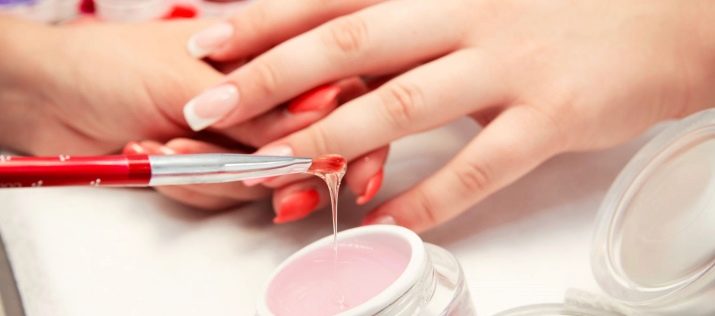
- further drying is performed in a lamp without pressing for 6 minutes;
- by lightly pressing on the tips of the form, the template is removed;
- file down the free edge;
- perform decorative manicure.
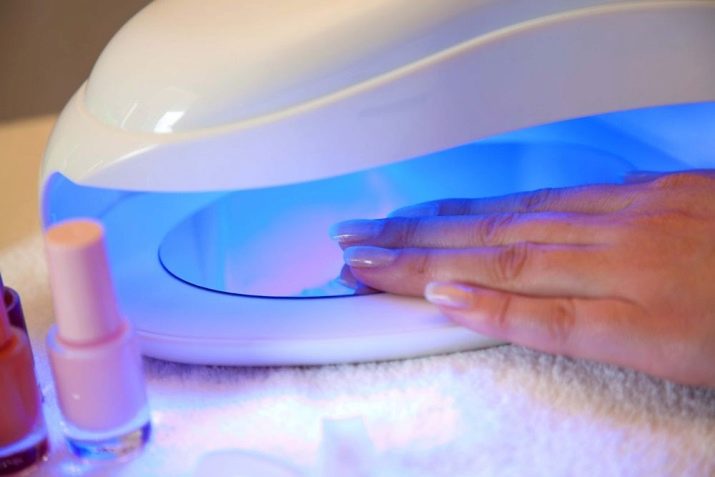
Acrylic
When working with acrylic, a special monomer is used, which will dissolve the powder, allowing you to get the desired consistency. This technique has its own stages. We must not forget that in the work it is necessary to priming the plates with a primer that protects them from the influence of the polymer.
- One (two, three) balls of acrylic are placed inside the prepared form. The amount of material will depend on the size of the plate itself, the width and length of the nail bed.
- Spread the acrylic evenly over the inside of the template.
- The mold is applied to the prepared nail and held for about 7 seconds.
- Next, the surface of the artificial plate is formed.
- The acrylic dries for about 3 minutes, after which you can start filing the free edge.
- Further, decorative manicure is performed.

One of the most crucial stages of modeling is pressing the shape to the nail. Sometimes it is necessary to distribute the modeling substance, squeezing the excess mass in length. It is extremely important here to avoid getting under the form of air.
You also need to make sure that the "stress zone" does not turn out to be too thin, as this can crack it. If there is not enough length during formation, it is added.
As for working with gel, it also has its own characteristics. For example, this substance does not tolerate additional manipulation. It is especially important here to do everything exactly right away. No adjustments will be made after applying the form. Also, you cannot touch the template until the gel is completely dry, even the slightest shape shifts are not allowed. The correct technique for nail extension with upper forms and gel will require a rotating or tunnel lamp.
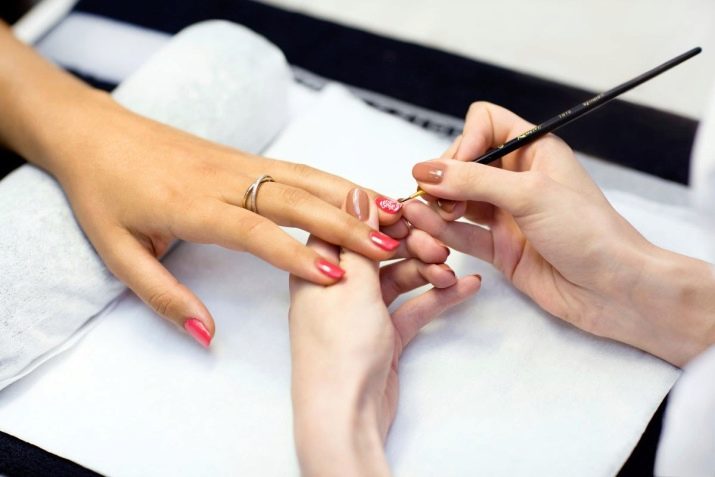
What's better?
It is impossible to say unequivocally which of the two materials is better, since each option has its own merits. For example, acrylic dries faster, which affects the time of the entire workflow. In addition, it is easier to lay out in a thin layer, due to which it looks more natural.
It should be noted that acrylic has an attractive price, it is economical to work with and is characterized by high strength.
When extending nails with gel, you can afford various fancy solutions. For example, even a jacket can be made with colored materials of this type. However, if there is no special lamp at home, it is worth trying acrylic modeling.
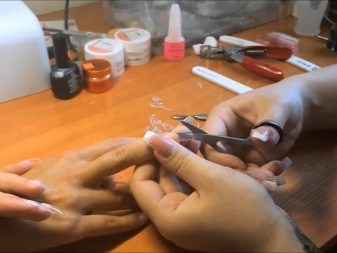
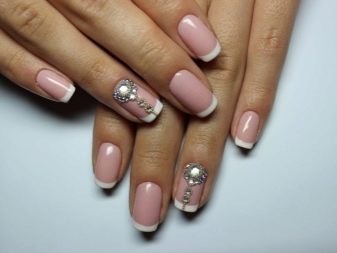
Reviews
Nail service professionals appreciate the top molds. According to them, this is a great solution for express manicure. At the same time, the masters note that the templates really simplify and facilitate the procedure for nail extension. The nails are smooth and flawless. After removal, it remains only to trim the free edge. Craftsmen like this approach to building, because the time allotted for modeling can be shortened, and due to this, it can be increased for design.
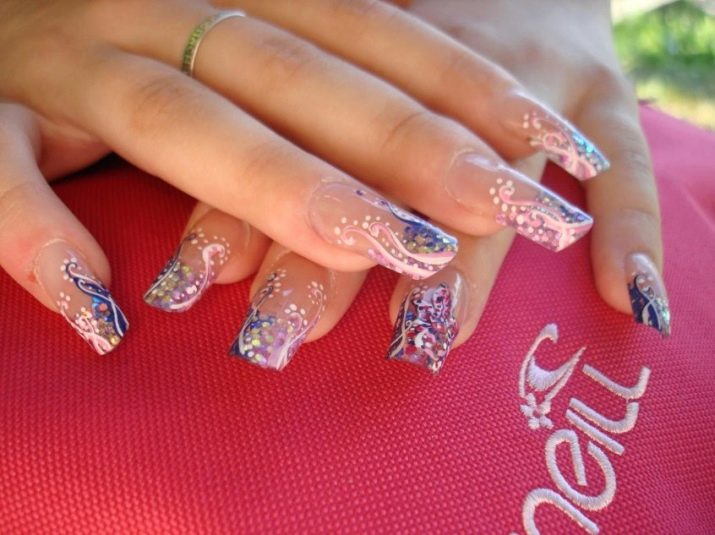
You can learn more about the upper forms for nail extension in this video.








